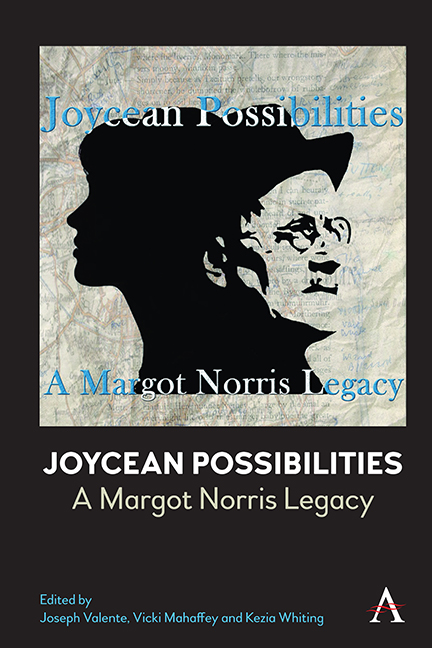4 - Free Indirect Palaver
Published online by Cambridge University Press: 20 April 2024
Summary
The verbal repetitions that flicker through Joyce's free indirect style in Dubliners arouse the interpretive unease that Margot Norris describes as an effect of Joyce's style, and point to the intersubjective and ideological make-up of the narration. Norris's vacillation between personifying the narration of the different stories or “merely endow[ing] it with a function” indicates some of the difficult questions raised by Joyce's narration (which are also questions endemic to free indirect style): where do these particular words come from? Do they (and how do they) give rise to the impression of a unique, cohering mind, of a character? While these questions might prompt us to assign words to either a character or a separate function of narration, as is the standard critical response to the braid of free indirect style, this kind of textual unravelling entirely misses the point: Joyce's intricate free indirect style entangles narration and character, such that they produce, respond to, and incorporate one another. Joyce's free indirect style both acts in accordance with a character's needs and desires and destabilizes their self-conception, but even this threat cannot be severed from the character. The free indirect style of Dubliners reveals, and revels in, the textuality of thoughts, such that the characters are produced by a machinery of contagion and repetition that violates any supposed autonomy or self-containment. The culmination of Joyce's repetitions in the final paragraph of “The Dead” highlights what his technique always generates: the simultaneous dissolution and unification of the subject. Like Norris, I consider the narration of Dubliners to be either in “collusion or conflict with one or another figure in the story,” but, for me, that collusion or conflict plays out within the subject itself: if the narration bolsters the character, that bolstering is part of their own defensive strategies; if it undermines the character, that undermining cannot be separated from their internalization of being observed.
Norris's approach to Dubliners examines its “writerly” (following Barthes) composition, finding that since the 80s “we have more and more the sense that in the process of reading the text we are completing it, producing new versions of it, writing it anew.”
- Type
- Chapter
- Information
- Joycean PossibilitiesA Margot Norris Legacy, pp. 41 - 56Publisher: Anthem PressPrint publication year: 2022

